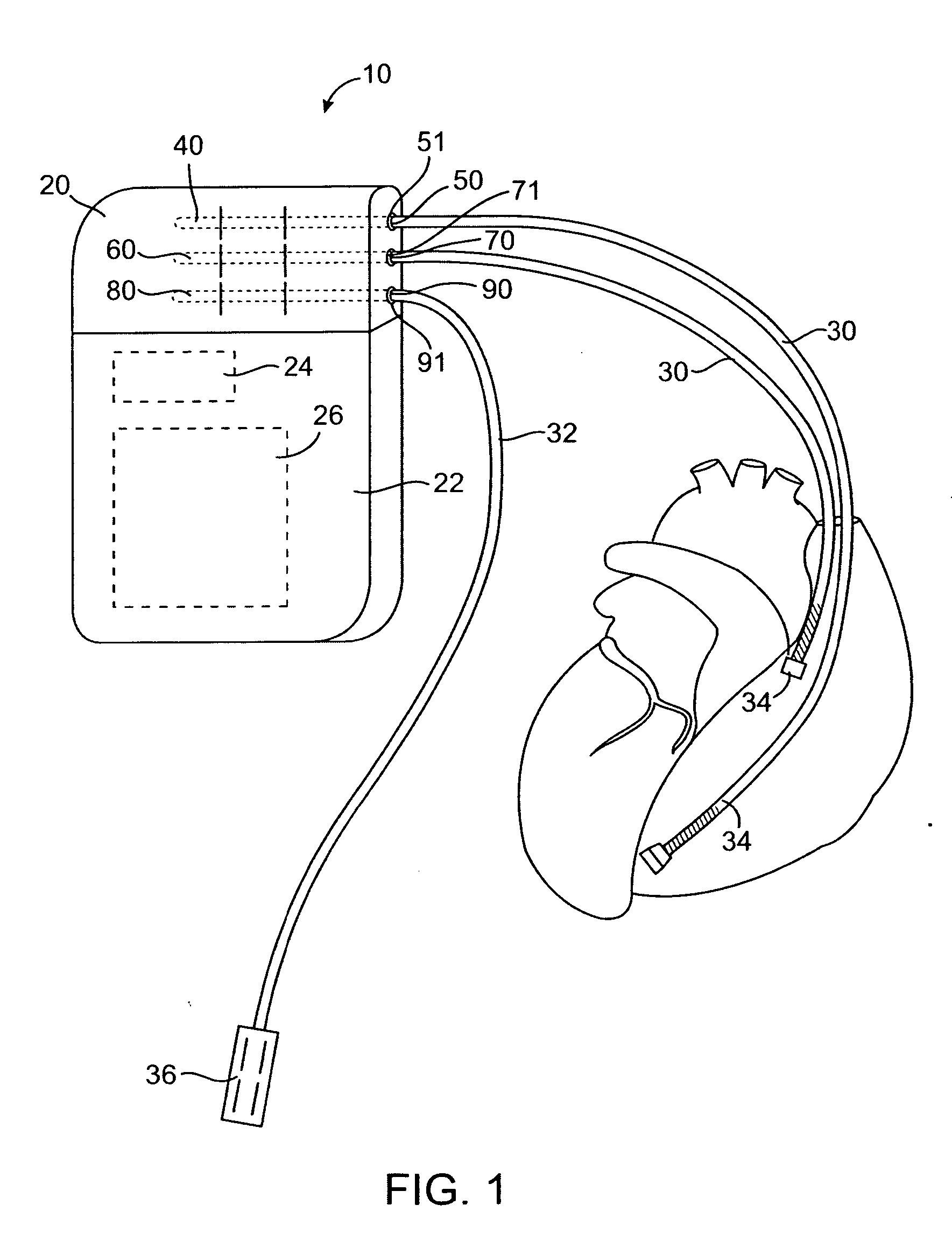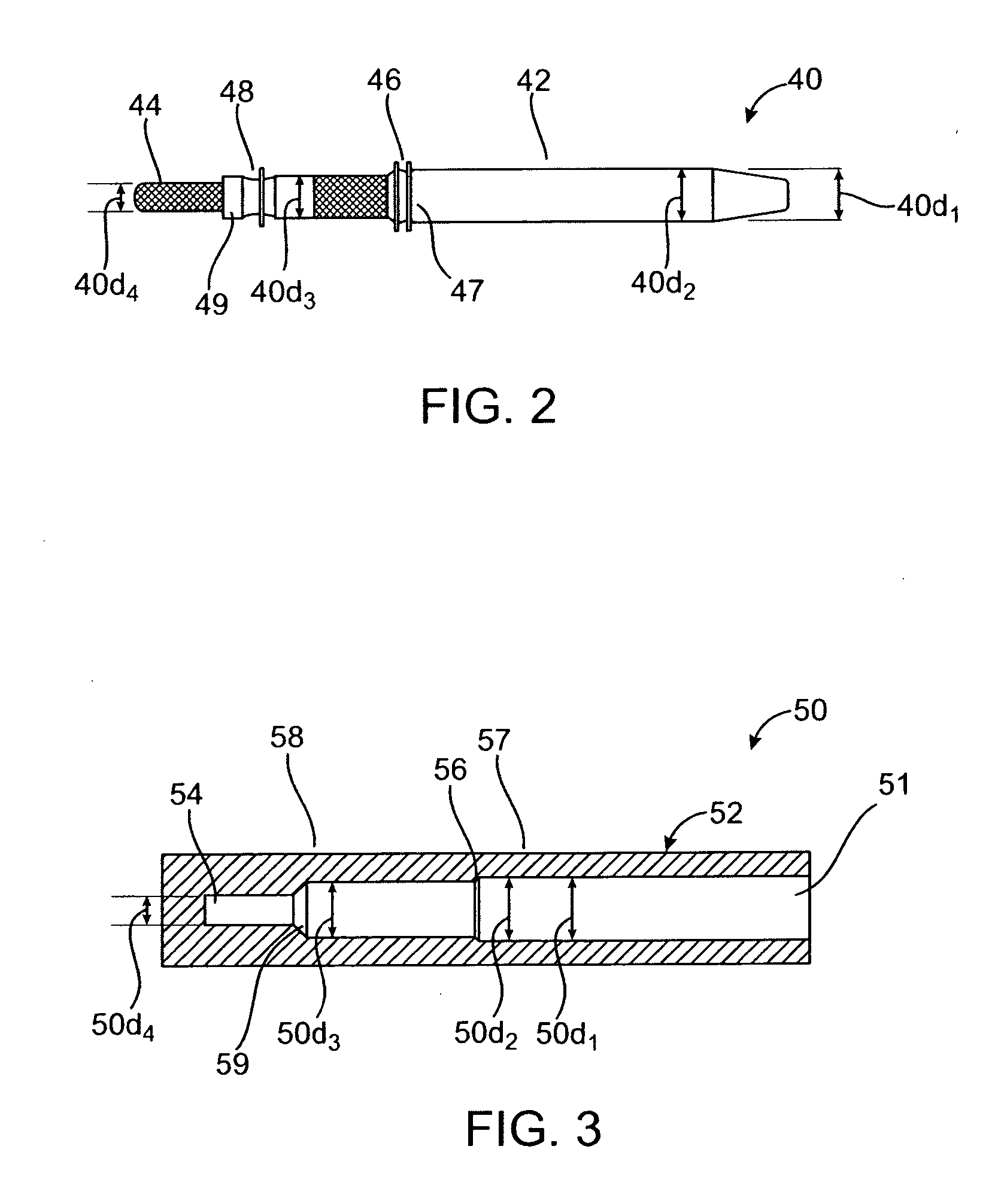Lockout connector arrangement for implantable medical device
a technology of lockout connector and implantable medical device, which is applied in the field of implantable electrical medical device lockout connector arrangement, can solve the problems that the df-1 defibrillation lead cannot be inadvertently electrically connected, and the non-cardiac stimulation lead pin cannot make effective electrical connection with the is-1 pacemaker lead port, so as to achieve effective lockout operation and effectively bar potential harm
- Summary
- Abstract
- Description
- Claims
- Application Information
AI Technical Summary
Benefits of technology
Problems solved by technology
Method used
Image
Examples
Embodiment Construction
[0022] An implantable pulse generator device typically includes an electrical medical device such as a pacemaker, cardioverter, defibrillator, baroreflex activation device, nerve stimulator, muscle stimulator, implantable monitor or other medical device and one or more electrical leads. Typically, the pulse generator device comprises a case and a header attached to the case. The case typically contains the electronics and the power source (usually a battery) for the implantable pulse generator. The leads are connected to the implantable pulse generator through ports in the header.
[0023] Referring to FIG. 1, there is shown an implantable pulse generator device 10 that is comprised of a header 20 and a case 22 containing a power source 24 and electronics 26. The header portion 20 of the implantable pulse generator device 10 is typically formed of a molded thermoplastic material, such as an acrylic material, and includes a plurality of ports 50 (pacing), 70 (defibrillation), and 90 (n...
PUM
 Login to View More
Login to View More Abstract
Description
Claims
Application Information
 Login to View More
Login to View More - R&D
- Intellectual Property
- Life Sciences
- Materials
- Tech Scout
- Unparalleled Data Quality
- Higher Quality Content
- 60% Fewer Hallucinations
Browse by: Latest US Patents, China's latest patents, Technical Efficacy Thesaurus, Application Domain, Technology Topic, Popular Technical Reports.
© 2025 PatSnap. All rights reserved.Legal|Privacy policy|Modern Slavery Act Transparency Statement|Sitemap|About US| Contact US: help@patsnap.com



